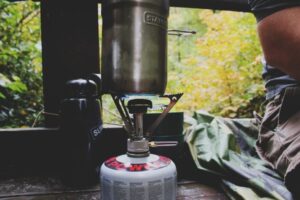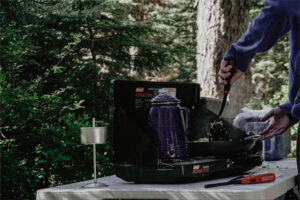
How to Protect Different Parts of Furniture
Fabrics
Outdoor furniture fabrics are prone to mold and stains. Use fabric protectors to repel liquids and weatherproof covers. Machine wash or spot clean regularly, and allow cushions to thoroughly dry to prevent mold growth. Make sure if you do machine washing, you do not put them in the dryer.
Cushions
Invest in cushions with water-resistant or waterproof covers. Store cushions indoors when not in use, especially during the rainy season. Fluff and rotate cushions regularly to ensure even wear. Always use cushion fabric protectant spray for sun and water shield effect
Legs
Elevate furniture legs to avoid direct contact with wet surfaces. Attach leg caps or glides to protect against scratches and rust. This simple practice extends the life of your outdoor furniture legs and maintains their aesthetic appeal.
Feet
Metal feet are susceptible to rust, while wooden feet can absorb moisture. Keep furniture elevated to prevent direct contact with the ground. For metal feet, use coasters or glides, and apply protective coatings to wooden feet. These steps ensure the longevity of your furniture’s structural components.
How to Protect Outdoor Furniture in winter
Winter weather can be particularly harsh on outdoor furniture. During the winter, guard your investments in the following ways:
Cover Furniture
- Use weatherproof covers to shield furniture from snow and rain.
Store Indoors:
- Whenever possible, store furniture indoors during winter to prevent freezing and damage.
Apply Sealant:
- For wooden furniture, reapply sealant before winter to create a protective barrier against moisture.
How to Protect Furniture From Different Elements
From Rust and Dust
Daily, remove the dirt and dust from the pieces by using a duster. Nothing rusts but bare metal. The set will not rust if it is painted and the paint is maintained in good condition. Touching up paint that has small holes or cracks in it is one way to address these issues. Fix the rust if it appears. Once a year, wax it.
Lastly, bring it inside or cover it until the weather improves if you live somewhere that experiences true winter. After warmups, paint and metal expand and contract at different rates in extremely cold weather. That is initially the source of those minor flaws.
From Sun Damage
Consider the place where you want to place them. The location of patio furniture is a crucial factor in reducing the effects of weather, something that most people often overlook. Naturally, the sun and rain will have easier access to your patio if your pieces are positioned on their edges. To protect your patio furniture from the harsh weather, move it to the center of the patio or into a shaded area when a storm is approaching or on a particularly hot and sunny day.
From Rodents
Most rodents, like squirrels, enter the backyard just for food, so remove any food debris and clean the area to keep them away. This is the finest way to make sure your patio furniture remains undamaged. To deter them from using the patio furniture in the backyard, remove them or provide a better food source in the front yard if they get into the trash, birdseed, or just acorns from your tree. Another way to deter them is to use an acrid spray, similar to what is used for dogs.
From Bird Poop
The most effective technique for removing bird poop stains is to brush the area. Avoid rubbing or spreading the stain by using a hard-bristled brush to remove it. If you do not have a bristled brush, an old toothbrush will also do the trick. After cleaning, give the furniture a thorough rinse with a hose. It is a good idea to loosen the stain if it appears to be adhered fairly firmly to your furniture.
Seltzer. After applying club soda or seltzer to the stain, let it sit for a few minutes before using a scrub brush or plastic scraper to remove the liquid. Make sure the liquid does not sit for a long time when working on wood furniture as this can harm the wood.
From Dogs
Pets are an important part of brightening up your life. First, try to teach your dog different commands and get your pet some alternatives. Try not to leave your dogs alone outside for extended periods of time if they are chewers. Dogs typically chew more when they are bored or nervous, which can happen when you are not around. Try applying sprays to furniture that your pet dislikes. Dog’s sensitive noses detect the strongest scents, which most humans would not detect.
Outdoor Patio Furniture Storage
During off off-season when the furniture is not in use, like in harsh winter weather, it is not a good idea to expose your patio to constant weather changes unless you live in a mild climate and use outdoor furniture the whole year. Before you store them, deep cleaning is necessary to maintain their health and aesthetics. After the process of completely drying them, store them away.
Use Plastic Wraps
Protecting your outdoor furniture is comparatively simple when you use plastic shrink wrap. You have the option of purchasing the plastic wrap on your own or hiring a crew to cover it for you. In the Northeast, where strong winds frequently cause snowstorms, this kind of protection is well-liked.
But plastic is not permeable. Water that seeps through will not be able to escape, which leads to the growth of mold and mildew. If the plastic is poorly wrapped or you buy cheap plastic, furniture may rip through it. It may cost you around $200, depending on the number of pieces
The breathability problem with tarps is the same as with shrink wrap. There will be no chance for any water to evaporate. In order to prevent the tarp from flying off during strong winds, you will need to fasten it with several bungee cords or ropes.
Covers
By using covers, you can leave your patio outside with care. You will save time and effort by not having to move the furniture to the basement or storage. On covered wood furniture, the growth of mold and mildew is a common concern. Select a cover with mesh vents and a breathable fabric. Additionally, choose a cover that has 1-2 inches of space between the ground and the bottom hem. Moisture will be able to evaporate more quickly thanks to the increased airflow. Try to remove any snow or water buildup from your cover every once in a while. Water that has collected inside can result in moisture buildup and make evaporation more difficult.
Fix outdoor furniture
If you live in a windy area, make sure your outdoor furniture is securely fastened. When not in use, try to keep chairs stacked and tied down, bring umbrellas inside or keep them closed, and make sure cushions are secured to the furniture. If you will not be using them for a while, cover everything once it is anchored with tarps or separate custom covers.





